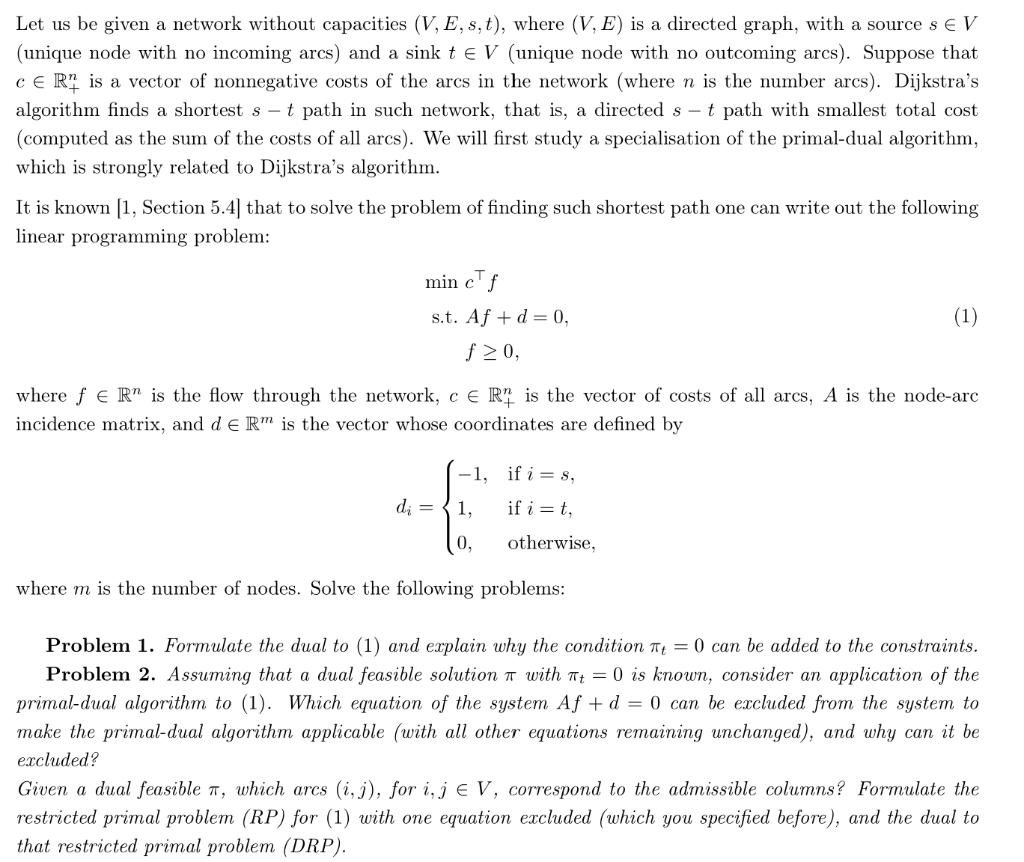Answered step by step
Verified Expert Solution
Question
1 Approved Answer
Let us be given a network without capacities (V, E, s, t), where (V, E) is a directed graph, with a source s V

Let us be given a network without capacities (V, E, s, t), where (V, E) is a directed graph, with a source s V (unique node with no incoming arcs) and a sink te V (unique node with no outcoming arcs). Suppose that CE R is a vector of nonnegative costs of the arcs in the network (where n is the number arcs). Dijkstra's algorithm finds a shortest st path in such network, that is, a directed st path with smallest total cost (computed as the sum of the costs of all arcs). We will first study a specialisation of the primal-dual algorithm, which is strongly related to Dijkstra's algorithm. It is known [1, Section 5.4] that to solve the problem of finding such shortest path one can write out the following linear programming problem: min c f s.t. Af + d=0, f 0, where fR is the flow through the network, c ER is the vector of costs of all arcs, A is the node-arc incidence matrix, and d E R" is the vector whose coordinates are defined by di = -1, 1, 0, if i= s, if it, otherwise, (1) where m is the number of nodes. Solve the following problems: Problem 1. Formulate the dual to (1) and explain why the condition Tt = 0 can be added to the constraints. Problem 2. Assuming that a dual feasible solution with t=0 is known, consider an application of the primal-dual algorithm to (1). Which equation of the system Af + d = 0 can be excluded from the system to make the primal-dual algorithm applicable (with all other equations remaining unchanged), and why can it be excluded? Given a dual feasible, which arcs (i, j), for i, je V, correspond to the admissible columns? Formulate the restricted primal problem (RP) for (1) with one equation excluded (which you specified before), and the dual to that restricted primal problem (DRP).
Step by Step Solution
★★★★★
3.50 Rating (173 Votes )
There are 3 Steps involved in it
Step: 1
Primed min of Af D f20 dual mon Ts 1 Afta j Fjcij for all Pj EE t0 Ti is unrestricted R...
Get Instant Access to Expert-Tailored Solutions
See step-by-step solutions with expert insights and AI powered tools for academic success
Step: 2

Step: 3

Ace Your Homework with AI
Get the answers you need in no time with our AI-driven, step-by-step assistance
Get Started


